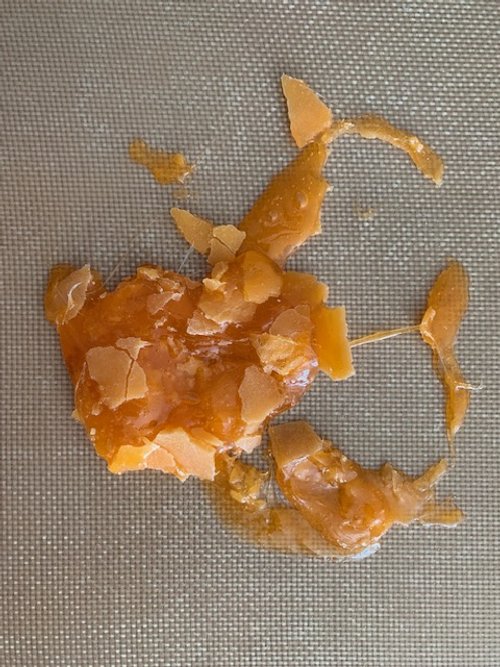Cooking With Sugar: Interfering Agents Explained
Oops - This is what a crystallized hot mess looks like
Ah, candy making. That magical time when you pretend you're a kitchen wizard. Everything’s going great—you’re boiling syrup, envisioning silky caramels—until BAM. Suddenly your sugar is throwing a tantrum, crystallizing into a sad, gritty mess. What happened? Who hurt you, sugar?
Spoiler alert: Interfering agents could have helped.
Wait—What Is an Interfering Agent?
Sounds dramatic, right? Like a spy sneaking into the pot to mess up enemy plans. And honestly? That’s kind of what it is.
In candy making, an interfering agent is an ingredient you add specifically to stop sugar crystals from forming. Because when sugar gets hot and melty, it has this annoying tendency to go rogue and form hard, jagged crystals—like the kind that make your caramel taste like sweet gravel.
Interfering agents swoop in like tiny culinary bodyguards, breaking up sugar’s little crystal party before it even starts.
Why Sugar Crystals Are the Frenemies of Candy
Let’s get a little nerdy for a second. When you dissolve sugar in water and boil it, it becomes supersaturated. Think of it like sugar on the edge—one wrong move (a stray spoon scrape, a speck of dust, your judgmental stare) and it’ll start to crystallize. Once one crystal forms, it’s game over. Your smooth, creamy candy becomes crunchy sadness.
Meet the Interfering Agents
1. Corn Syrup: The Smooth Talker
Corn syrup is like that friend who can diffuse drama at a party. It contains glucose, which doesn't crystallize as easily as sucrose (a.k.a. granulated sugar). It sneaks into the sugar structure and says, “Hey, let’s just chill.” Result? No crystals, just silky perfection.
Use it in: caramels, nougat, marshmallows—basically anything that’s supposed to be smooth, not crunchy.
2. Cream of Tartar: The Secret Agent
Cream of tartar is the stealthy acid that breaks sugar molecules apart like a tiny molecular divorce lawyer. It splits sucrose into glucose and fructose, both of which are less likely to crystallize.
Use it in: fondant, fudge, and sometimes hard candies.
3. Butter: The Chill Aunt
Butter does two things. One, it adds fat that coats the sugar crystals and physically gets in their way (like a bouncer at a VIP club). Two, it adds richness and makes everything taste better, which isn’t scientifically required but is emotionally necessary.
Use it in: toffee, brittle, pralines—basically anywhere you want flavor and smoothness.
4. Honey: The Hippie Cousin
Honey is mostly glucose and fructose, so it naturally prevents crystallization. Plus, it brings its own mellow, floral vibe to the candy—like a natural sweetener with strong opinions about free-range bees.
Use it in: chewy candies, caramels, or just to make your recipe sound rustic and wholesome.
5. Lemon Juice or Vinegar: The Tangy Troublemakers
They’re acids like cream of tartar, breaking down sucrose into its friendlier components. Great in small doses—unless you want your candy to taste like salad dressing, in which case, live your truth.
Sugar is Dramatic, and Interfering Agents Are the Calm Friends We All Need
Without interfering agents, candy making would be one long exercise in heartbreak. So next time you’re standing over a bubbling pot of potential deliciousness, remember: add an interfering agent, and you too can help prevent a sugar meltdown (although sometimes it happens anyways).
Now go forth, armed with science and sass, and make candy that melts in your mouth—not your patience.
Hey, I’m Kim!
After a lot of practice (and a few sticky disasters), I’ve crafted a delicious selection of lollies and mastered a ton of candy making tips to share with you—lump free. (You’re welcome.)





